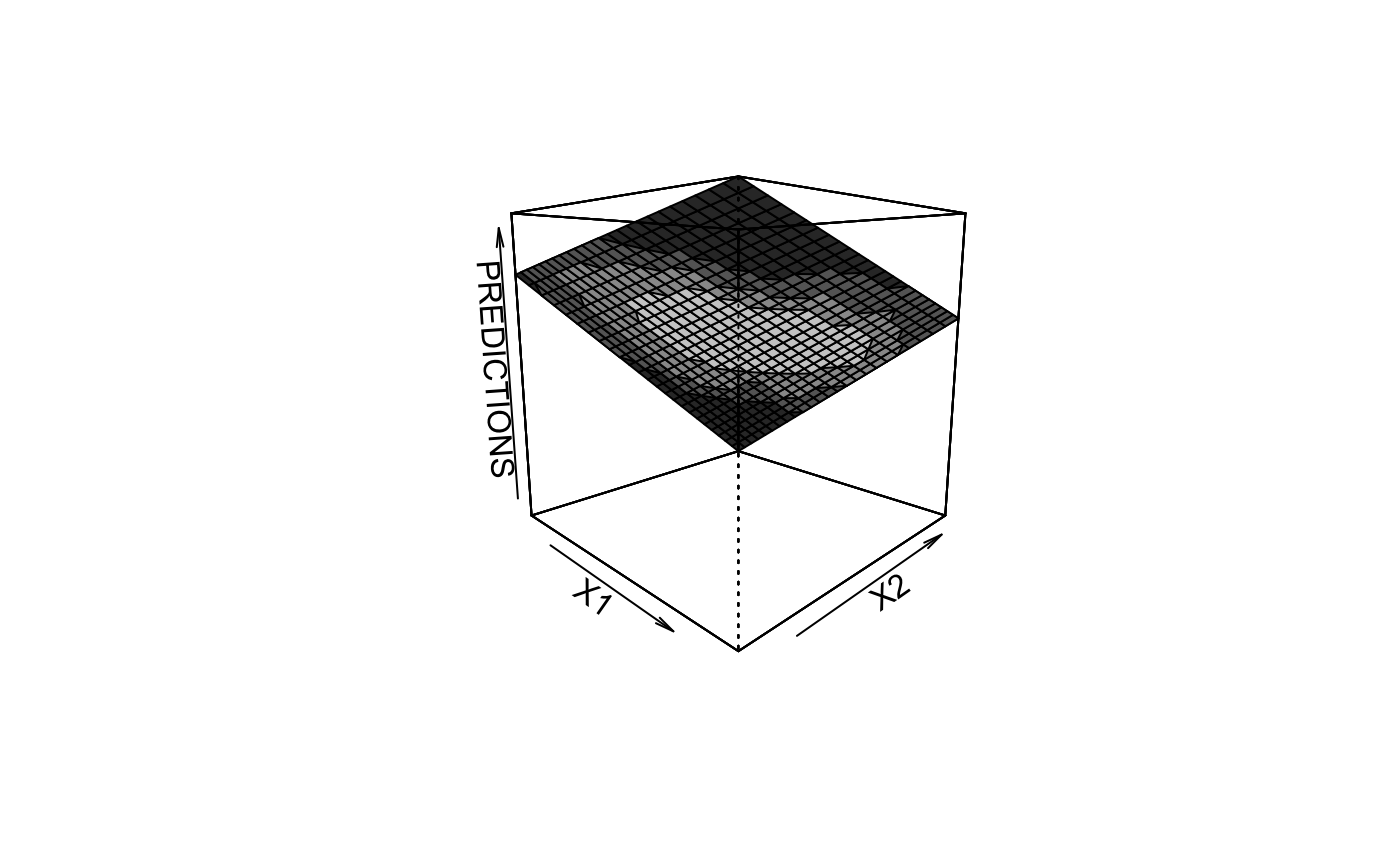Surface Plots for Two-Way Interactions
DAintfun.RdMakes surface plots to display interactions between two continuous variables
DAintfun( obj, varnames, theta = 45, phi = 10, xlab = NULL, ylab = NULL, zlab = NULL, hcols = NULL, ... )
Arguments
| obj | A model object of class |
|---|---|
| varnames | A two-element character vector where each element is the name of a variable involved in a two-way interaction. |
| theta | Angle defining the azimuthal viewing direction to be passed to
|
| phi | Angle defining the colatitude viewing direction to be passed to
|
| xlab | Optional label to put on the x-axis, otherwise if |
| ylab | Optional label to put on the y-axis, otherwise if |
| zlab | Optional label to put on the z-axis, otherwise if |
| hcols | Vector of four colors to color increasingly high density areas |
| ... | Other arguments to be passed down to the initial call to
|
Value
Values of the first element of varnames used to
make predictions.
Values of the second element of varnames
used to make predictions.
The predictions based on the values
x1 and x2.
A graph is produced, but no other information is returned.
Details
This function makes a surface plot of an interaction between two continuous
covariates. If the model is
$$y_{i} = b_{0} + b_{1}x_{i1} +
b_{2}x_{i2} + b_{3}x_{i1}\times x_{i2} + \ldots + e_{i},$$
this function plots \(b_{1}x_{i1}
+ b_{2}x_{i2} + b_{3}x_{i1}\times x_{i2}\) for
values over the range of \(X_{1}\) and \(X_{2}\). The highest
75%, 50% and 25% of the bivariate density of \(X_{1}\) and
\(X_{2}\) (as calculated by sm.density from the sm
package) are colored in with colors of increasing gray-scale.
